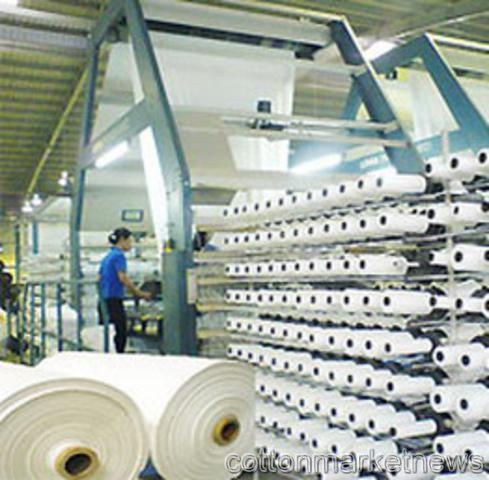Sunday, April 24, 2011
Farmers optimistic in wake of cotton price surge
 Farmers have a lot in common with baseball players.
Farmers have a lot in common with baseball players.
Both begin the bulk of their work in the spring, and both can be a superstitious lot.
“What’s interesting is the years that end in zero are drought years over the last 30 years, but all the years that follow them are really good years,” said Myron Johnson, who owns Double J Farms in Headland with his wife, Laura. “That’s not just superstition, that’s fact. We had a climate meeting a few weeks ago, and climatologists can’t explain it, but they were surprised by the facts. I can’t explain it either, but it’s historical fact.”
While baseball players may be celebrating an increased batting average, farmers this year are celebrating a spike in cotton prices.
Cotton, one of the key crops throughout the Wiregrass, has reached record-high prices, exceeding $2 per pound.
“The primary reason is there’s a worldwide shortage of cotton,” said William Birdsong, an extension specialistfor the Alabama Cooperative Extension Service. “There were some natural disasters in countries last year such as India and Pakistan, and the world supply was not very large to begin with. Not only that, but the worldwide economy has started recovering, and whenever that happens, consumption of cotton increases.”
Wiregrass farmers faced a difficult, dry 2010, but like pitchers rebounding from a down year, many are optimistic about what’s in store for 2011.
“Last year was bad (because of) the drought. In June, we had the best-looking crop we ever had in my 33 years of farming, but from there it went to nothing,” Johnson said. “(The cotton prices) are encouraging, and it’s not just cotton either. All commodity prices are up. Corn and cotton, those crops fight over acres. The demand is certainly there. We like to have something to hope for, and that’s encouraging.”
Like a veteran manager before the season, Birdsong wants the best for his players but knows it’s not going to be easy for them.
“We certainly hope, and the farmers are optimistic about the potential profitability of this year’s cotton crops,” he said. “We are due for a good growing season. It has been a while since we’ve had a very productive year for cotton. By no means does that guarantee this will be a good, productive year. No one has the ability to know except the good Lord. At least the opportunity for profit is being afforded to the growers, so we are very optimistic about this crop being a good year.”
It’s often said power is the last attribute to leave a great big league slugger, and peanuts and cotton are the heavy hitters for Wiregrass farmers.
“Peanuts and cotton are more weather resistant than other crops,” Johnson said. “Corn you can lose in one week. Peanuts will sit and wait for rain. I remember in ‘98 I thought the crop was dead. We hit a rain spell and it ended up being the best crop we ever had at that point. They’re built to grow in the Southeast. Peanuts and cotton were being grown here before we got here and they’ll probably be grown here long after we leave.”
Statistics are the lifeline of Major League Baseball, and the country’s farming community relies just as much on numbers — inches of rainfall, money spent and, of course, acres planted.
According to the National Agriculture Statistics Service, Alabama farmers plan to plant 410,000 acres of cotton this year, 70,000 more than last year.
But while they’re hoping to hit a home run with cotton this year, farmers can still strike out swinging.
“It’s probably one of the most frustrating things about farming,” Johnson said. “There’s not a lot of professions where you can be really good and it not matter. If you’re good at what you do, you’ll probably get rewarded in some way. Here, you can be the best in the world, and you’re still depending on the rain. The bright side is prices are good, but until we deliver the crop, it doesn’t matter.”
Just as pitchers sometimes add new pitches to their repertoire, Johnson has adjusted his farming techniques to keep up with an evolving agricultural world.
“We’ve really moved to strip-till with heavy crop residue to protect the soil from rain, wind and erosion,” he said. “We’re all dry land, no irrigation, so anything to preserve moisture is good. It’s the wave of the future.GPS technology has opened the window for us to do 100 percent cover crops, which presents its own challenges. We’re working through those, planting heavy soil and everything is looking good so far.”
The Los Angeles Dodgers have been dealing with extreme financial difficulties lately, and, according toBirdsong, farmers can relate to the perils of financial burden.
“To the average reader out there, nobody really realizes what it takes to run a farm. Nobody,” Birdsong said. “I know a grower who sold $100,000 worth of cattle. He said (because of) the bills, pre-bought fuel, land payments, equipment payments, etc., in one month he paid $99,000 in expenses the same month he got a $100,000 paycheck. Everybody thinks with a $100,000 check, you’re rich. The farm puts a lot of money into circulation in our local economy. It provides good jobs, and the Wiregrass benefits from it overall.”
And if there’s one thing farmers share with baseball players and managers alike, it’s their love of clichés.
“This very likely could be a good, profitable year for the farm, but nothing is guaranteed, and you can’t count your chickens before they hatch,” Birdsong said.
(Source: http://www2.dothaneagle.com/news/2011/apr/24/farmers-optimistic-wake-cotton-price-surge-ar-1755284/)

This post was written by: HaMienHoang (admin)
Click on PayPal buttons below to donate money to HaMienHoang:
Follow HaMienHoang on Twitter










0 Responses to “Farmers optimistic in wake of cotton price surge”
Post a Comment